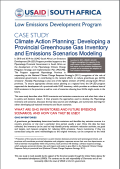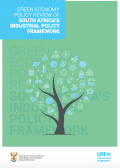This study, using historical aerial photographs and mapping techniques, investigates how the South African Kromme River Catchment has changed over the past century. It illustrates that the catchment, which is valuable in providing water for the Nelson Mandela Bay metropolitan hub, has become heavily degraded.
The floodplain wetlands, which historically occupied the entire valley floor, have been almost completely replaced by agriculture or invaded by the alien tree Acacia mearnsii. While some efforts have been made to restore the wetlands and control the invasive plants, at the current rate of clearing, it would take 30 years to bring A. mearnsii under control.
The authors conclude their analysis by stating that managing the functioning of rivers requires holistic, integrated catchment management approaches as well as interdisciplinary co-operation. Riparian systems have been described as complex adaptive systems and both a social learning process and an adaptive management approach is needed. They recommend that important water providing catchments, where agriculture is marginal, should be prioritized for provision of water-related ecosystem services alone. Investment into improving the resilience of these systems as insurance against future climate changes is essential. This should take the form of prohibiting unsustainable land management practices and enforcing the laws that protect rivers and wetlands, eradication of invasive alien plants, and rehabilitation of the river and wetlands. They anticipate that this investment in restoration will have to be accompanied by an extensive effort into education and social learning.



